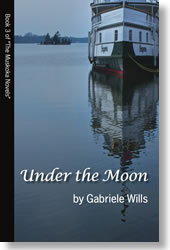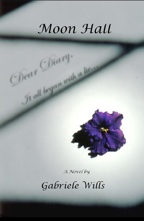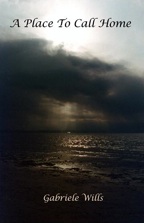The following is an excerpt from a scene in my novel
Elusive Dawn, which is set during the Battle of Vimy Ridge, Apr. 9, 1917. Captain Justin Carrington is a young lawyer whose family summers in the lake district of Muskoka, Canada. British aristocrat Antonia Upton is with an ambulance corps near Calais. This has been abridged, leaving out some military details and mention of other characters.
Justin Carrington was thankful to be out of the deep subway and cave where the slimy chalk walls had begun to close in on him, reminding him of the suffocating mud of the Somme, making him ashamed of the panic that he had to force back into the pit of his belly. By now he should have been used to the sweat and latrine stench of war, but with men packed so tightly together in these underground tunnels grey with cigarette and candle smoke, the oxygen seemed to have been used up. So he breathed deeply of the cold, pre-dawn air.
Like most of the men, he hadn’t been able to sleep, even if it had been physically possible to find a comfortable place to rest. For months the entire Canadian Corps had been training for this day. Over and over they had practiced behind the lines – their objectives carefully laid out, the timing of their advance coordinated to the split-second – so that every last man knew exactly what to do….
The men had had their rum ration, and boxes of Canadian Lowney chocolate bars had miraculously appeared. Justin savoured every bite of his, while relishing the reminder of home.
So now they all stood silently in the trenches, in the rain that was turning to sleet, many up to their knees in icy sludge. 30,000 Canadian infantry strung along the four miles of Vimy Ridge. With another 70,000 soldiers in support roles behind – the gunners, engineers, medics, cooks, and so forth – it meant that the entire Canadian Corps was here, together for the first time….
Justin checked his watch yet again. 5:15. Almost Zero Hour.
His company of four platoons would go over in the second wave, leap-frogging those leading the assault at a predetermined line. The first battalions were already in the shallow jumping-off trenches and craters in no-man’s-land.
After a week of constant shelling that had pummeled the German trenches and defences with a million shells, the silence now was eerie. And taut. Every one of them knew only too well that the Allies had tried and failed to take this strongly fortified and tactically important ridge during the past two years…. Despite some trepidation, Justin felt confident that their intense preparation and unprecedented bombardment would surprise and overwhelm the Germans.
And he felt buoyed by the latest letter from Antonia Upton. She had written, “We have been evacuating the wounded from the base hospitals in large numbers recently,” which, in the parlance of censorship, insinuated that she realized space was being made for an onslaught of new casualties. She went on to say:
We often hear the remorseless guns, and I wonder how you can stand the diabolical noise that surely threatens the very sanity of civilization. When we have air raids here, I sometimes find it difficult to muster the courage to keep going, cherishing the sanctity and preciousness of life too much to lose it. There is so much yet to experience, so much promise to fulfill. It seems almost treasonous to admit that I don’t want to sacrifice myself or any of my friends to the dubious glory of the Empire. Forgive my womanly heart, for I do not mean to diminish what you men are trying and dying to achieve.
I expect you will soon be preoccupied, and trust you will be careful as well as lucky. I enjoyed our perambulations about the Hampshire countryside, and hope we can repeat those when the wildflowers are in bloom and the trees, lushly green. And perhaps you will take me sailing and canoeing when I come to visit your magical Muskoka. I have presumptuously included a photograph of myself in the event that you may wish to recall your correspondent.
Fondly, Toni
He had chuckled at the formality of that last sentence, which was no doubt intended to make the gesture appear less intimate. But he was delighted by the photograph and studied it frequently as if he could delve better into her psyche. To him it was evident that she was transparent, her inner beauty reflected in her outer attractiveness. From her perceptive, forthright gaze shone humour and a joie de vivre that captivated him. He had the picture tucked into his breast pocket, and felt the intoxicating stirrings of love.
Joyfully he had replied to her:
Your photo has brought me much cheer, but I hope that I may see the real you before long. Not in your capacity as an ambulance driver, however!
I applaud your womanly heart, and agree with your sentiments. I have done much soul-searching over the past two years, caught between my civilized conscience and the dictates of war. I have seen both the best and the worst that human beings can do, the many and ever more mechanized ways we can slaughter one another, although we are more alike than dissimilar.
Your friendship has revived in me the determination to survive this war and to make a difference in a world changed forever, but open to new possibilities. Our generation must try to right the wrongs that brought us here and for which so many, as Rupert Brooke so aptly said, ‘poured out the red sweet wine of youth’.
Be assured that your thoughts and words comfort and sustain me, Toni. I long to sit in the sunshine with you, listening to the birds, but without the guns which now disturb their songs. The larks here seem forever hopeful. So shall I be.
Affectionately, Justin
It was snowing now, the wind whipping up a blizzard.
5:28. Two minutes to go. After a passing whisper, the tiny clinks of bayonets being fixed to rifles coalesced and tinkled down the line.






































